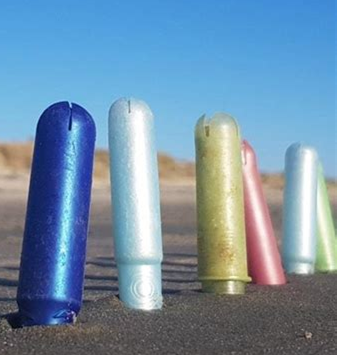International Women's Day - What’s the environment got to do with it?

At first glance, women’s rights and the fight against climate change are two separate issues, but since the 1960s, the ecofeminist movement has been highlighting how gender inequality intersects with the environmental crisis. The western world prioritises production, consumption and individualism, often at the expense of nature and women, particularly women of colour. The Bollywood actress Meena Kumari sums this up neatly in the 1965 movie Kaajal, when she utters words that seem rather ahead of their time: “Women and the earth have a lot to tolerate.”
One example of this intersection is in period products. Most period products in use by women today are made with plastic. Indeed, a big-brand pack of 14 menstrual pads contains the same amount of plastic as 5 carrier bags, and each pad can be made of up to 90% crude oil. The plastic used in these products takes at least 500 years to break down, and the 2 billion products that are flushed down the toilet every year causes sewage blockages and pollution to our rivers and seas. According to City to Sea’s plastic free period campaign, if just 20% of people in the EU used a menstrual cup instead of single-use items, it would prevent 100 tonnes of waste across the 27 EU member states, every year.
What’s more, non-organic plastic period products contain pesticide residues, plasticizers and fragrances. All of these chemicals are known to disrupt the endocrine system (EDC’s), which is instrumental in regulating mood, growth and development and reproduction. Scientists aren’t sure what the extent of the effects of these chemicals could be on the body, but avoiding them as much as we can seems wise to us….
The issue of plastic period products is a complex one when unpicked: period poverty and lack of education around normalising periods can lead to inadequate and non-sustainable disposing solutions and/or menstrual blood shame and disgust. Tackling these issues head on by widening period education and making reusable alternatives accessible may help change the tide on the period waste problem.
We get it: buying enough period-proof pants for your days of bleeding costs a lot more than buying two packs of plastic sanitary pads. But it only costs more the first few times; after all, you have to keep buying sanitary towels and tampons whereas a set of period proof underwear or menstrual cup is a long-term investment- switching could save you up to 94% of the original lifetime cost of menstruating!
To help with the upfront cost, the period pants company WUKA offer an 18% discount for NHS staff, and the City to Sea campaign has lots of great resources for comparing and contrasting the different reusable options.
Don’t forget to log your sustainable period swaps on choosing greener: pledge to use less plastic by only using reusable period products for 100 green points or show us what sustainable alternatives you’ve used for 200 green points!
Happy IWD all <3



